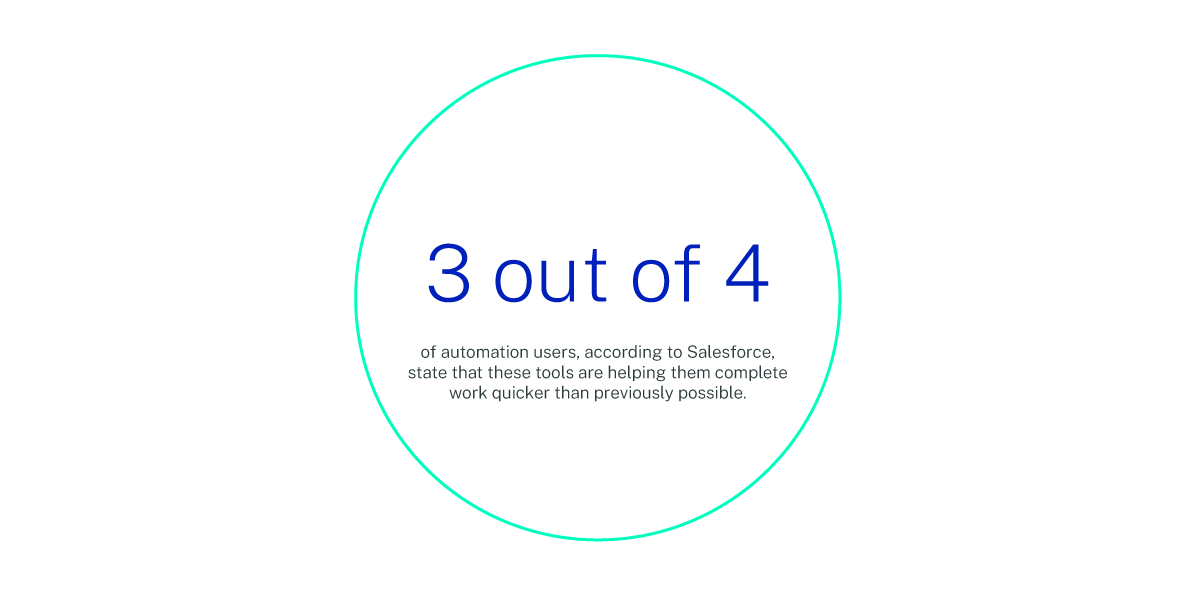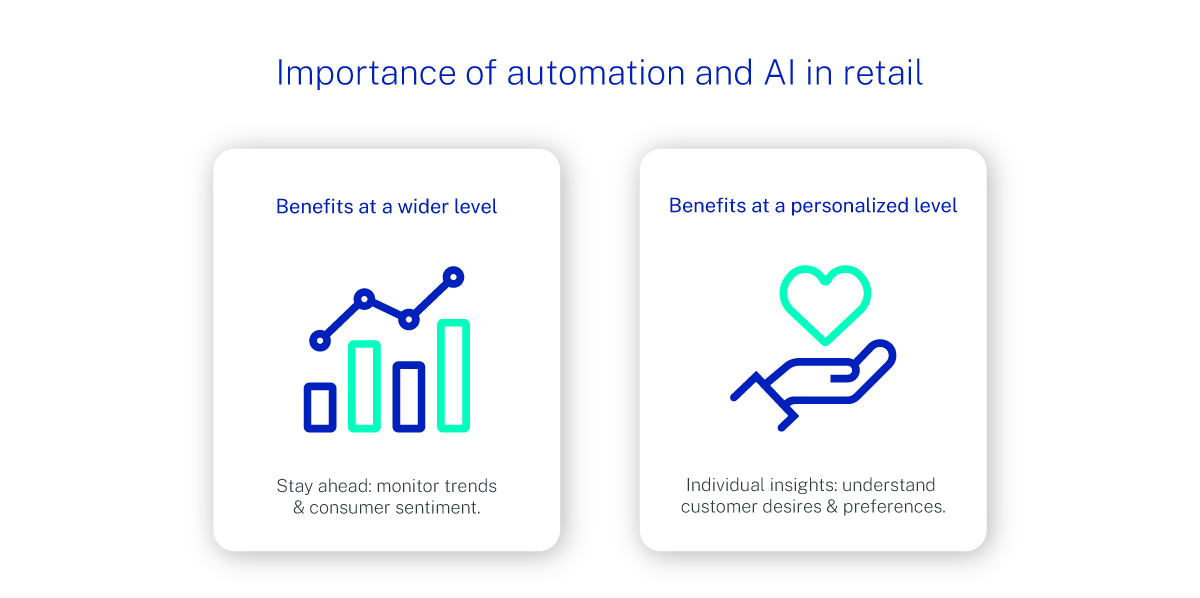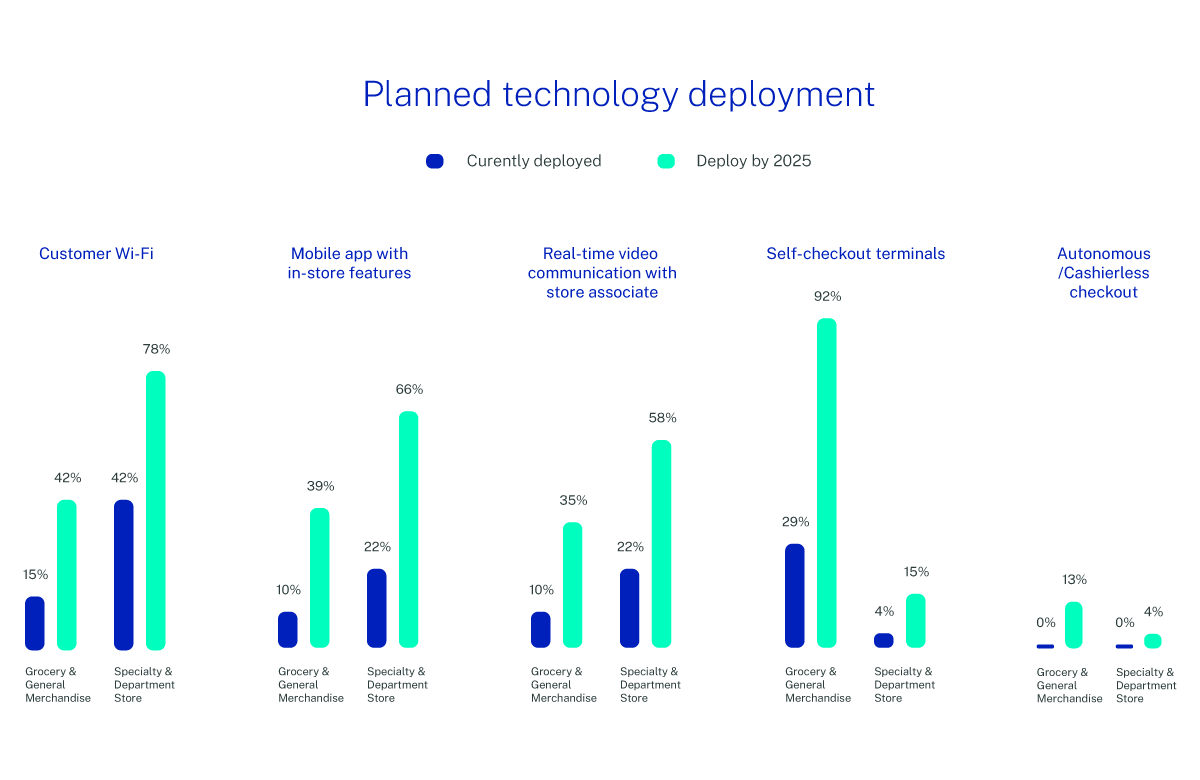How the use of automation is leveling up the retail industry
In virtually every industry, automation is shaking up the established order, and the retail sector is certainly no exception. Automating regular tasks like daily workflow and daily reporting are helping all forms of organization increase their productivity: according to Salesforce, almost three-quarters of automation users say that these tools are helping them get work done quicker than they could before.

Adding to the potential of automation are intelligent innovations like Artificial Intelligence (AI) and machine learning, which mean that more complex tasks can now be automated as well as simpler and more repetitive ones. A key area of this evolution is process automation, particularly in supply chain management within the retail and consumer sectors.
It’s no surprise, therefore, that businesses who are pushing the boundaries of what they can do with automation are finding themselves more productive, more agile, more cost-effective, more motivated across the workforce, and with a healthier bottom line.
This blog will explore this potential with a specific focus on automation for the retail industry: how it works, where it can be applied, and how automation can support the human workforce rather than replace it.
What is retail automation?
Retail automation is the act of deploying automated tools to improve everyday processes within a retail operation, whether in-store, in eCommerce or across a combination of the two. Innovative solutions and technologies come together to drive efficiencies, cut costs, improve productivity, reduce human error and drive better customer experiences.
How is automation being used in retail?
Many retailers have already found several effective ways to embed automation into their processes - not only online in their eCommerce platforms, but also physically in their in-store experiences. A prime example of this is the adoption of process automation, particularly in supply chain management, which has shown significant impact. For instance, our work with a billion-dollar Consumer Packaged Goods (CPG) company demonstrated a marked enhancement in their supply chain efficiency through process automation.
How these technologies can be applied varies depending on the specific nature of the retail business, and is changing all the time as the capabilities of the technology expands.
However, three key general trends have emerged thus far:
 Automation for in-store processes
Automation for in-store processes
The ability for staff on the shop floor to use tablets and other portable devices wherever they are means that they can have the power of automation at their fingertips. For example, virtual assistants within those devices can equip staff with the information they need to inform and assist customers in real time. Additionally, many processes that staff would previously have had to do manually are also ripe for automation, such as returns processing, inventory management, and the emailing of customer information such as receipts and invoices.
At Paysafe, a payments solution specialist, we were able to deliver 28 automations to improve processes across merchant services, consumer services and risk, saving more than 30,000 hours in staff time.
 eCommerce customer service
eCommerce customer service
Chatbots and virtual customer service agents are one of the most fruitful uses of automation in the retail industry. According to Gartner, the use of conversational AI within contact centers will save as much as $80billion in labor costs by 2026. Underlining the potential of AI for customer support, our mobile chatbot migration work at Paysafe delivered a bot case completion rate of more than 95%.
Automation can also take care of some of the other processes that customers often find frustrating, such as digital return labels.
 Customer behavior and trend analysis
Customer behavior and trend analysis
Using automation and AI to analyze the behavior of customers is vitally important for every retailer, for two reasons. At a wider level, it helps retailers stay on top of changing consumer sentiment and identify new trends, giving them the information they need to adjust their offerings accordingly. And at a more personalized level, it allows retailers to get insight into individual customer desires and interests, and target them with offers and advertising that are most likely to generate engagement and sales.

What are the benefits of automation in retail?
Research has found that the majority of routine retail tasks are eligible for automation. A report from Incisiv has found that as many as 70% of this work could be automated as soon as 2025. This is such a vast scale of implementation that there will be a huge difference in productivity and revenue between those retailers that make the most of automation, and those that don’t.

Maximizing the potential of automation in the retail industry can deliver benefits in many key areas, including (and by no means limited to):
 Customer experience:
Customer experience:
Automation like chatbots for customer service, and personalization within the sales journey, means that consumers can get the high-level experiences that they’re increasingly looking for Employee experience:
Employee experience:
When employees are able to get more done in their days, and can avoid the most mundane and repetitive tasks, they can feel more productive and therefore happier and more motivated in their jobs. This can also help improve talent retention and acquisition in an industry where staff turnover can be high Brand reputation:
Brand reputation:
Delivering consistently good customer experiences, and gaining a reputation for top-quality customer service, can help a retailer stand out from the competition and gain a strong positive brand perception Customer loyalty:
Customer loyalty:
Connected to the previous point, a strong brand and a large base of satisfied customers means it’s much easier to get customers to come back time after time. This can make a huge difference to profitability at a time when it’s never been easier for consumers to shop around, whether in person or online Operational efficiency:
Operational efficiency:
Automation can make the execution of tasks faster, more reliable and more accurate, even when the volume of tasks (and the data involved) are large. This level of operational efficiency can save time, money and resources, all of which can be put to better use elsewhere within the business Business growth:
Business growth:
All of the points above can make a meaningful contribution to the growth and revenue of a business. More efficient processes, more intuitive experiences for customers and a greater capacity for workload can all make their own positive contribution to the bottom line. However, understanding and managing the costs of AI implementation is crucial for businesses to ensure a balanced, sustainable approach and maximize return on investment for long-term success Futureproofing:
Futureproofing:
At a time when automation and retail are both evolving at pace, making the most of the technology now will make it easier to adapt to whatever the next innovations will be. This means businesses can maintain their agility and have a better chance to gain first-mover advantage when opportunities ariseAutomation vs in-store workforce: how do they support each other?
Naturally, employees who are relatively new to understanding automation may have concerns about the deployment of the technology in a retail setting, because they worry that the likes of AI may render their jobs obsolete. However, when automation is deployed in the right ways, it can be a force for good and help make employee’s working lives easier, more productive and more enjoyable:
 Staff efficiency:
Staff efficiency:
For a start, being able to automate the more mundane and repetitive processes can free up staff time that they can devote to more value-adding and interesting work elsewhere. There’s an obvious benefit for the employee in getting to do more satisfying tasks, but also benefits for the employer who gets a more motivated workforce, as well as the confidence that AI is completing tasks more consistently and accurately.
 Maximizing staff skill sets:
Maximizing staff skill sets:
Similarly, in customer service, automation can take care of the basic, more common queries through customer-facing chatbots, giving staff more time to deal with complex issues where the human touch is much more important. And in the warehouse, staff can use automated inventory and order fulfillment systems to speed up processes, and drive continuous improvements through data analysis.
Of course, all this represents a major change for employees who have been used to manual-heavy processes and ways of working for a long time. That’s why change management is critical when bringing in any automation deployment, to ensure that the transition is smooth and that job roles and workflows gradually evolve. Ultimately, there is a balance to be struck between human interaction and automated efficiency in delivering quality customer and employee experiences.
In summary: what does the future hold for automation in retail?
Much of the direction of travel for automation and the retail industry is likely to be driven by Artificial Intelligence and machine learning. As the capabilities of AI continue to expand at pace, the ability to deliver hyper-personalized customer experiences, and to maximize efficiencies in inventory management and supply chain optimization will only increase.
Furthermore, the ability to take advantage of these innovations will become more democratized over time. Whereas only the biggest retailers can maximize opportunities at present because they have the resources and in-house capabilities to do so, accessibility to automation and AI will only increase. In time, even smaller independent retailers will be able to use the same innovations and compete on a more level playing field.
However, these are developments that will likely only become mainstream in the medium-term future. For the time being, it’s crucial for retailers to explore existing technologies, including AI in its current form, to make fundamental operational improvements. As we move towards 2024, the role of process automation in retail, especially in supply chains, is expected to grow even more, demonstrating its substantial impact on operational efficiency and business growth.
Your perfect partner for automation
If you feel you need help achieving this, then the expertise and leading automation and AI innovation of a partner like Ciklum could be ideal for your retail business. Our commitment to the most up-to-date AI applications, combined with a global expert workforce, can help you identify the best candidates for automation across your organization, and apply the right solutions for maximum effect.
To find out more on what we do and how we do it, learn more about our approach to automation in the retail industry, or get in touch with our team directly.
You may also like
Subscribe to receive our exclusive newsletter with the latest news and trends
Subscribe to receive our exclusive newsletter with the latest news and trends
Want to reach out directly to us?
hello@ciklum.com
© Ciklum 2002-2023. All rights reserved


.jpg)
